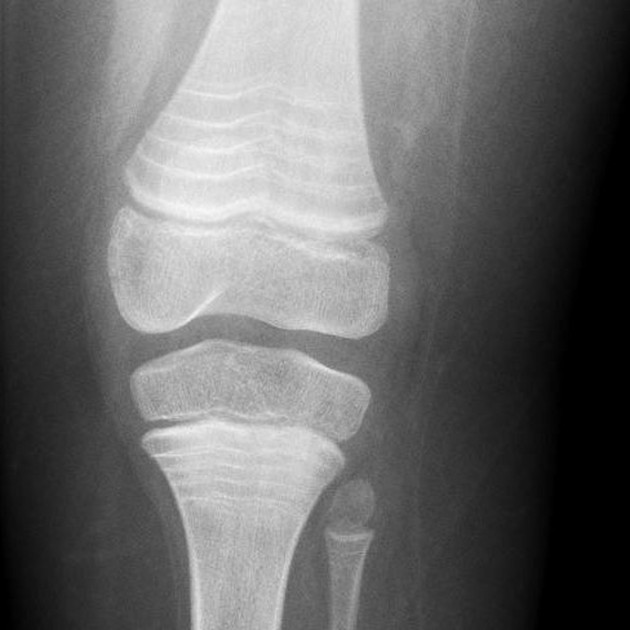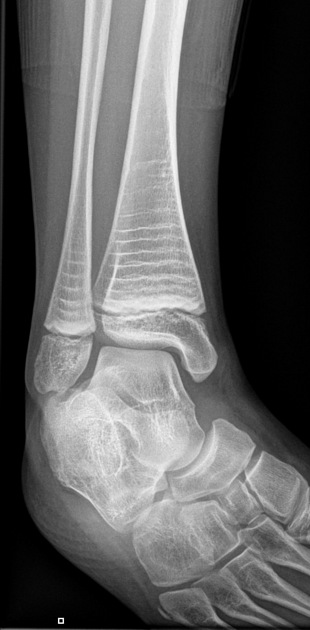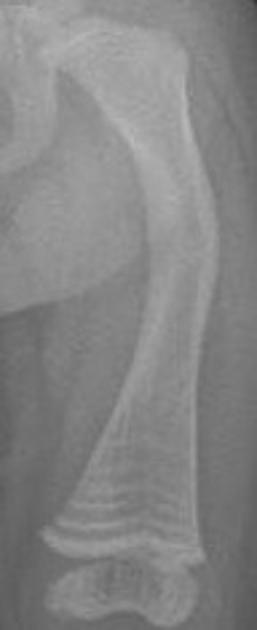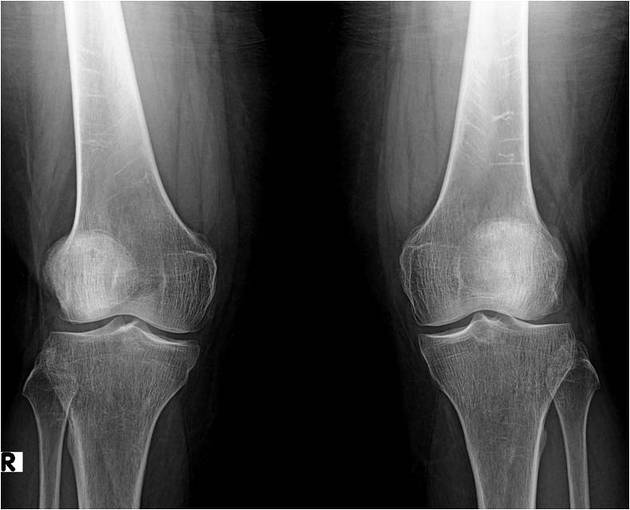Growth arrest lines, also known as growth resumption lines, Harris lines or Park lines, are alternating transverse rings of sclerosis at the metaphysis of a long bone.
On this page:
Pathology
The radiographic finding occurs from alternating cycles of osseous growth arrest and growth resumption. This appears to result from pathologic levels of stress during bone development (e.g. disease, malnutrition).
The phenomenon has been described as originating from "osteoblasts, deprived of a longitudinally oriented template of calcifIed cartilage matrix, [continuing] their activities on the horizontally disposed template produced by the undersurface of the epiphyseal cartilage" 2.
Some contend that the lines are not necessarily indicators of development stress, but may be a variation of normal 4.
Microscopic appearance
Trabeculae immediately above and below a growth arrest line are normal, but the Harris line has three histological characteristics 3:
non-lamellar appearance on histology
a complete lack of osteocyte lacunae
presence of irregularly distributed tubular structures
Radiographic features
On x-ray and CT, they are seen as transverse radiopaque/sclerotic lines in the metaphyses of long bones. On MRI they appear as hypointense bands on both T1 and T2 weighted imaging.
History and etymology
First described by H Harris in 1927 1.










 Unable to process the form. Check for errors and try again.
Unable to process the form. Check for errors and try again.